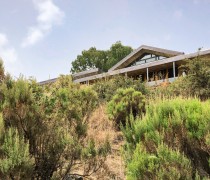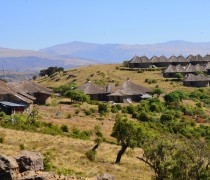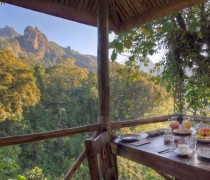Travel With Tamara | The Endemic Species of Ethiopia
The Endemic Species of Ethiopia
Ethiopia might not host the huge herds seen in Africa’s more traditional safari destinations, but many species found here exist nowhere else in the world.
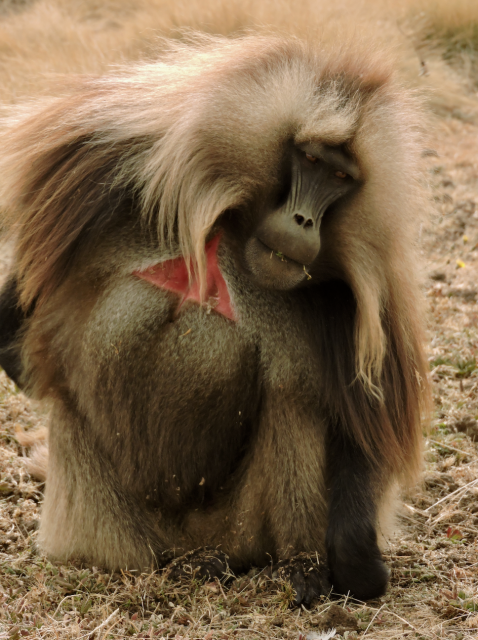
While Ethiopia is best known for its ancient churches and castles, its remarkable wildlife is also worthy of note.
Take the wolf. Its sharp features and auburn coat led this charismatic canid to be called either Simien Fox or Red Jackal until DNA tests revealed it to be closer to the grey wolf and the coyote. Ethiopian Wolves like high altitudes of over 3,000m; their northern race is mostly found in the Simien Mountains and the Guassa Plateau while their southern race is in the Bale Mountains and surrounding highlands. They tend to live in packs of between six and 20, but hunt alone. Their food of choice is the Giant Mole Rat which they ambush at the outlets of their burrows, but they have been known to eat other rodents, hyraxes and even the calves of the Mountain Nyala. Sadly, the wolves’ population has decreased dramatically because of expanding human populations, habitat degradation and the transfer of diseases such as rabies and distemper from domesticated dogs, and they are now critically endangered. The wolf population has shrunk to about 350 of which around 70% are in the Bale Mountains.
What’s known as the Gelada baboon, also called the ‘bleeding heart monkey’ because of the distinctive red marking on its chest, is in fact neither a baboon nor a monkey. The only living member of the genus Theropithecus, Greek for ‘beast-ape’, the Gelada is a fluffy, friendly creature that forages for grasses, flowers and roots. Preferring to live at altitudes of between 1,800 and 4,400m, the Gelada is best seen in the Simien Mountains, although they can also be spotted in most highlands around Ethiopia. Geladas are creatures of habit. They sleep tucked into cliffs; at sunrise they move to the plateaus to eat, groom and socialise; in the heat of the day they forage and feed; at dusk they become social again before returning to the cliffs to sleep. They use a complex communication system remarkably similar to human speech that includes sounds, facial expressions and body postures. Geladas usually live for about 15 years.
The skittish Mountain Nyala has attractive white patches on its dusky face; the males have striking spiralled horns while the females have no horns. Despite its name, the Mountain Nyala is a closer relative of the kudu than the South African Nyala. Preferring to live at altitudes of between 3,000 and 3,400m, they’re most frequently found on the Gaysay Plateau near Dinsho, headquarters of the Bale Mountain National Park. Cautious of people, they often spend the night tucked into the edges of forests, sidling onto grasslands during the day to browse. While usually seen in clusters of four to six, they have on occasion congregated in groups of up to 100. The females and their young tend to stay in areas of around 5km2but the unterritorial males can wander across expanses of up to 20km2. They like to eat bushes, shrubs and foliage, and have sometimes been seen using their horns to reach the higher branches. Their numbers are decreasing because of hunting; around Easter, Oromo men traditionally undertake a horseback nyala hunt. The Mountain Nyala stands proud on the back of Ethiopia’s 10 cents coin.
The Walia Ibex, Ethiopia’s rarest endemic species, is more often seen on the label of the popular local beer named in its honour than in person. Now found only in the Simien Mountains, it’s a rather spectacular goat with dramatic arched horns and incongruous black-and-white striped legs. Walia Ibexes live at altitudes of between 2,500 and 4,500m, and prefer to hang out on rocky cliffs and narrow mountain ledges. They enjoy browsing on bushes, herbs, lichens, shrubs and grasses, and are sometimes spotted standing on their hind legs and stretching up to nibble the tastiest shoots. During mating season, intense fights take place between males who ram their horns into each other. While they aren’t the favourite food of any predators, the young are occasionally taken by foxes and cats. However, their population has been decimated by hunting, expanding human populations and loss of habitat due to farming.
The multi-named Giant Mole Rat is also known as the Big-Headed African Mole Rat, the Ethiopian African Mole Rat and the Giant Root Rat. Only found in the Bale Mountains, these surprisingly large rodents swarm across the grasslands in groups of as many as 2,600. While they live underground in dens and tunnels, they come out to forage for herbs, grasses and roots. Unluckily for them, Giant Mole Rats are the preferred delicacy of the Ethiopian Wolf. These wolves have perfected the technique of chasing them into their tunnels, then waiting for them to resurface and snapping them up. Despite the gnashing of their long sharp teeth which do occasionally cause serious injury, the Giant Mole Rat most often loses the battle with the more voracious Ethiopian Wolf.
Tamara Britten, 16 May 2020
Published also in: ATC News
About the region
Northern
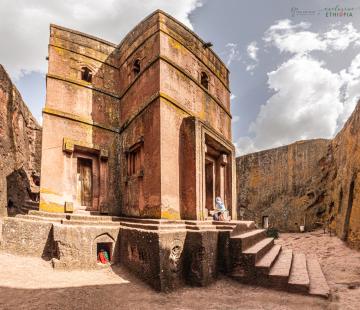
The historic north is home to what are arguably Ethiopia’s most popular sites. The legendary historic route includes Bahir Dar, Gondar, Axum, Lalibela and Gheralta. The region also includes Lake Tana, source of the Blue Nile, and the Simien Mountains, with Ethiopia’s highest peaks and most diverse wildlife.
Read more about NorthernSouthern
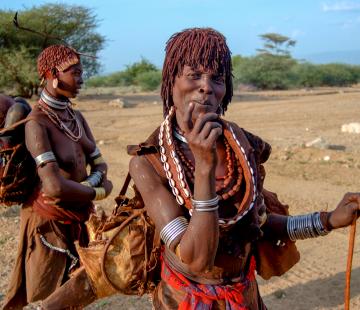
Ethiopia’s south is perhaps best known for the tribes who dwell here, particularly around the Omo Valley, who live according to their traditional customs. The region is also known for the Bale Mountains National Park, and for the chain of lakes that stud the Rift Valley.
Read more about SouthernWhere to stay
In the spectacular Simien Mountains, Limalimo Lodge aims to promote sustainable tourism and support conservation in a unique and sustainable environment. The owners, Shiferaw Asrat and Meles Yemata, promote sustainable and community focused tourism in the Simien Mountains National Park. The 12 en-suite rooms are dotted ...
Styling itself the highest hotel in Africa, at 3,260m, Simien Lodge sits on the edge of the escarpment with views that have to be seen to be believed. The 26 en-suite rooms and 2 family rooms are divided between the tukuls – traditional Ethiopian circular buildings – and the ...
The rolling hills and craggy peaks of Bale Mountain National Park are filled with 87 mammal species including the rare Abyssinian Wolf and the Mountain Nyala. Bale Mountain is home to 320 species of birds including 170 migratory birds and 14 endemic species. Bale Mountain Lodge has breath-taking views ...
